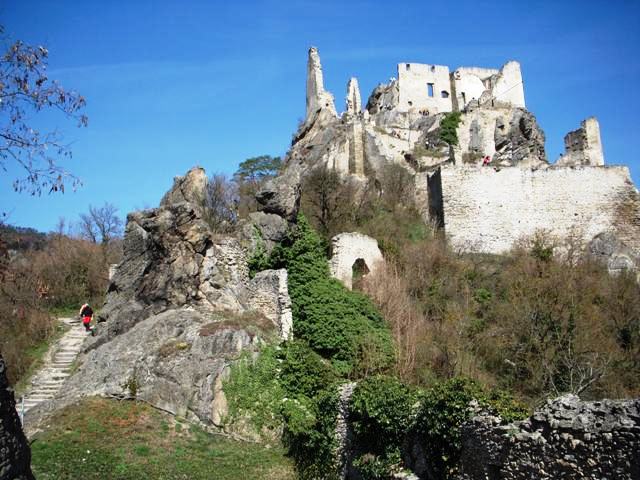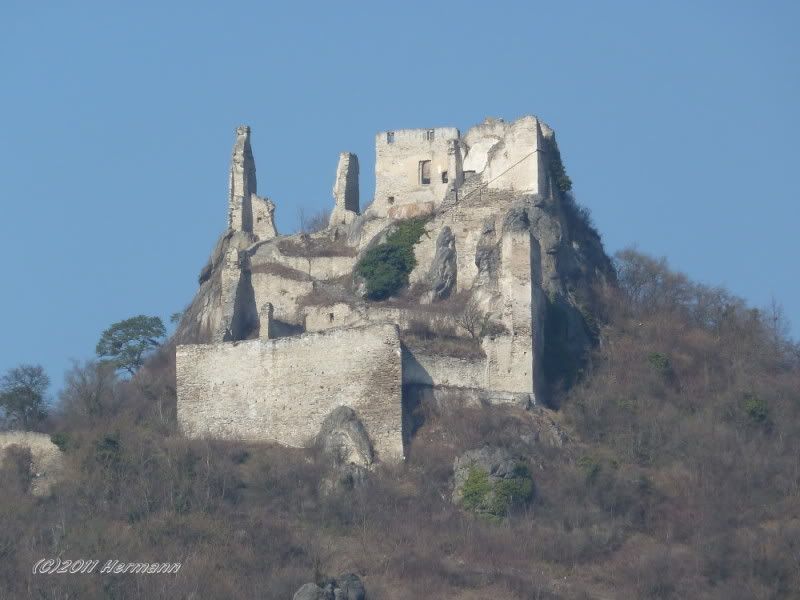Burg Dürnstein
P3
The Dürnstein Castle is a medieval castle at Dürnstein high in Styria in Murau in Styria ( Austria ).
Location
Dürnstein was built on a once eppensteinischen reason on the ever changing border between Styria and Carinthia in strategically good position. A withdrawing from Alpl - Kogel south-west ridge narrows hard on the border to Carinthia and falls to the south, west and north steep to perpendicular to the northward narrowing valley of the Olsa from. Go up to a hundred meters over the valley floor and reached on a rocky outcrop which was built in well sheltered position and once important border fortress of Dürnstein.
Below the ruins was formerly the so-called " Italian main street ", with the participation of the Imperial border toll between Styria and Carinthia was established at this point.
History
In 1144 the castle was first mentioned as castrum Dierstein. It was the seat of the gender of Dürnsteiner, which became extinct in 1192. After the extinction of Dürnsteiner the castle came into the possession of Wildon; its sitting on Dürnstein branch called after the castle. Subsequently, the castle was purchased in 1299 by the Prince and remained until 1608 in their possession. In 1500 the castle was given a water pipe. The castle fell into disrepair from the late 16th century and was abandoned in 1610. 1809 Austrian troops used the ruins as cover against the advancing French.
Plant
From the north to the entrance to the castle is preceded by a round tower with a pointed protrusion, the lower part of reminding masonry consists of ashlar masonry, which probably dates from the 13th century; therefore likely to belong to the oldest surviving parts of the castle tower. The wall of the causeway to the south west forms a kennel whose stock exemplary masonry is largely attributed to the 14th century, but there are also parts of the walls of ashlar masonry or opus spicatum that. In the 12 -13 Century are dated. The way south on it and reach for a turn in the road heading west again built castle gate, which is bordered on the north by standing in a north-south direction east wing. While the stock -like masonry of Osttrakts refers to the time it was built, the floor looks almost tart. Through the reconstructed castle gate leads into a preserved in its original state gatehouse with cross vaulted ceiling. Located directly on the angles in the southwest sloping escarpment is the west wing, which dates from the time of the tower; a series of closely spaced, 1.7 m high embrasures located on the slightly younger west wall. The spacious courtyard between the east and the west wing is bounded on the north by a wall with elongated loopholes that runs along the escarpment. A later zugebauter connecting tract between east and west wing includes the courtyard to the south.









.jpg/300px-Burgruine_D%2525C3%2525BCrnstein_(Steiermark).jpg)
